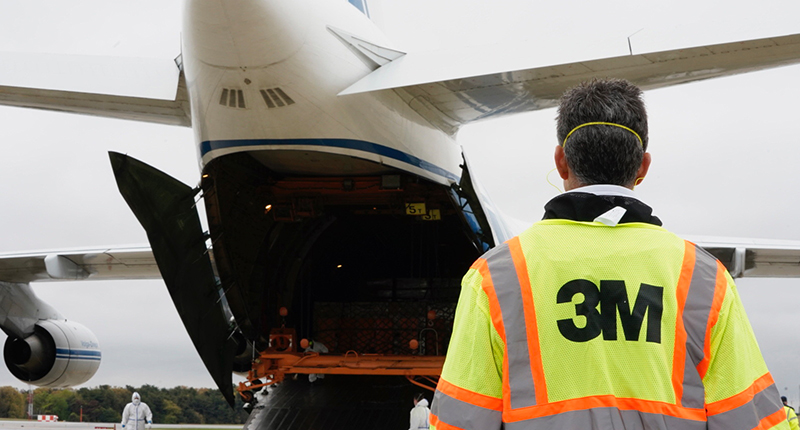
Loaded with more than 4 million respirators, the Antonov AN-124 cargo plane touched down April 24 in Baltimore after a 15-hour flight from Shanghai. The respirators, sourced from 3M plants in Asia, are now on their way to healthcare workers.
With this shipment and many more like it, additional personal protective equipment (PPE) will begin to arrive at healthcare facilities in the United States to aid in the fight against the novel coronavirus.
As the U.S. Federal Emergency Management Agency (FEMA) distributes this PPE to states for use where it is needed most, users may have questions about new product specifications, fit and filtration compared to respirators produced domestically.
We have created a site, https://www.3m.com/airlift, to help answer frequently asked questions and help healthcare workers determine whether or not the PPE they are using is a 3M product or a potential counterfeit.
Additional information about the shipped respirators and answers to questions you may have about them can be found below.
What to know about imported respirators
In early April, 3M and the U.S. government, with the Trump Administration’s assistance, announced a plan to import 166.5 million respirators into the United States from 3M plants in Asia, over a 3-month period.
Many global respirator certifications are considered to be comparable to those issued by the U.S. National Institute for Occupational Safety and Health (NIOSH) for NIOSH-approved N95 respirators commonly used in the United States. You may, though, notice that the look and fit may be different than what U.S. healthcare providers are used to seeing – including, for example, a vertical flatfold construction on several models, the use of ear loops instead of head bands, or unfamiliar certifications and labels printed in foreign languages.
Appearance: As these vertical flatfold respirators are designed for people with facial features commonly seen in China and Asia, they may not fit some people in the U.S. as well as respirators intended for sale and use in the United States. Therefore, as directed by U.S. Occupational Safety and Health Administration (OSHA), users must be fit-tested before use. If a fit test cannot be conducted, or the wearer cannot pass a fit test, then these products should be used as a facemask, not a respirator. To find out more about conducting fit tests, see here. For more on the difference between respirators and masks, see here.
Ear loops: Some of these respirator models will also include ear loops, which are common in the United States on surgical masks, but not on respirators. In countries outside the United States, 3M does manufacture some certified respirators that feature ear loops. Information about which respirator models contain ear loops can be found in this product table. NIOSH has commented that “limited assessment of ear loop designs indicate difficulty achieving a proper fit. While filter efficiency shows how well the filter media performs, users must ensure a proper fit is achieved.”
Certifications: Many of the respirators will include certifications not normally seen in the United States. In its Strategies for Optimizing the Supply of N95 Respirators, the U.S. Centers for Disease Control and Prevention (CDC) has recommended that healthcare institutions that no longer have access to any N95 respirators consider alternative respirators that are approved by other countries for occupational use and are similar to N95 respirators. Similar respirators include those approved to the following standards: Australia / New Zealand P2, China KN95, Japan DS2, and Korea Special 1st Class. OSHA has issued interim enforcement guidance to allow use of these respirators in U.S. workplaces during shortages of NIOSH-approved respirators.
Also, some respirators being imported are designated as KN90 – respirators that meet a China government standard that requires lower filtration efficiency performance (at least 90%) than NIOSH N95 (at least 95%). While KN90 respirators are a form of respiratory protection, the amount of exposure reduction they are designed to provide is lower than the minimum amount that U.S. OSHA and NIOSH associates with the filtering facepiece class of respirators. Therefore, it is recommended that the use of KN90 respirators be considered a Crisis Capacity Strategy and that they be used where masks would otherwise be used.
User instructions: Consistent with U.S. Food and Drug Administration direction, FEMA and 3M will take steps to try to ensure that user instructions in English are provided to organizations receiving these respirators, including posting user instructions for these respirators here: 3M Respirators in International Packaging Made Available in US during COVID-19.
For more information on the imported respirators, including frequently asked questions, see the latest technical bulletin.

